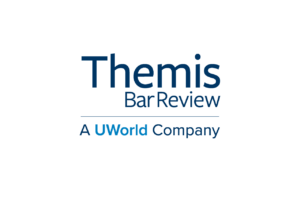Demystifying 'Executive Presence'
The concept of executive presence includes the element of being trustworthy, and within being trustworthy is an element of ensuring that you are authentic.
 Until I became an in-house lawyer, I had never heard the term “executive presence.” Even now, I find the term elusive — much like “penumbra” in Constitutional Law. It seems to be something that you either have or you don’t, and even if you can’t define it, you know it when you see it. After a couple of years working on my own executive presence, here are a few things I’ve learned on my journey.
Until I became an in-house lawyer, I had never heard the term “executive presence.” Even now, I find the term elusive — much like “penumbra” in Constitutional Law. It seems to be something that you either have or you don’t, and even if you can’t define it, you know it when you see it. After a couple of years working on my own executive presence, here are a few things I’ve learned on my journey.
It Is Contextual?
First, there’s no one single definition, which is frustrating if you’re trying to do better because you don’t know what “it” is. Words or concepts that are often used interchangeably are “gravitas,” “credibility,” “confidence,” or “leadership ability.” There are likely graduate students now and into the foreseeable future whose dissertations are on this very topic.

Raising The Bar in Bar Prep
Remember the saying that beauty is in the eye of the beholder? I think that applies to executive presence too. Instead of one single definition, whether you have executive presence actually depends upon the people in the room and how they define what it means. It can depend on the culture of your team, the department, and the company.
To know what it means for you, consider asking leaders at your company who they would describe as having executive presence. Even if they can’t define what it is, they can at least point you to who they believe have it, so you can see for yourself what they believe it looks like.
It Is Both Verbal And Nonverbal
Most people inherently understand that people with executive presence “look” the part and that how you dress, rightly or wrongly, can drive how you are perceived. What we often miss is the nonverbal body language that also plays a huge part in exuding executive presence. How much do you talk with your hands? How much eye contact are you using? How do you walk, stand, or sit? How do you sound? What is the volume, rate, and pitch of how you speak? Do you speak up in meetings and when? What do you say and how do you say it? A resource I recommend is “The Credibility Code” by Cara Hale Alter.
Sponsored

How To Build And Manage Your Law Firm Rate Sheet

Trust The Process: How To Build And Manage Workflows In Law Firms

How Savvy Lawyers Build Their Law Firm Rate Sheet

How Savvy Lawyers Build Their Law Firm Rate Sheet
It Can Be Learned
This one I know intimately because I have had to learn it, and I continue to practice and grow. Besides reading books and articles on the topic, I also began working with a professional coach in 2019. It has also been helpful for me to observe other leaders at my company and notice how they may have different styles but are all perceived as credible leaders.
It Is Not ‘Fake It Until You Make It’
At least, it isn’t for me. I think it’s too exhausting to try to be something or someone you’re not. I can’t pretend to be interested in sports; it would take too much time to learn, watch, and keep up with the games. In my observation, the concept of executive presence also includes the element of being trustworthy, and within being trustworthy, there is an element of ensuring that you are authentic. I have grappled with the tension between having executive presence and authenticity for some time, and while there can be a tension, it is one that you alone have to explore for yourself.
For example, I am a very casual person; I do not take myself too seriously. If I had my choice, I’d be in a white T-shirt and Vuori joggers and Nikes all the time. And if asked what I would want to wear when giving a presentation, regardless of the audience, I would probably prefer to throw on a blazer on my T-shirt, joggers, and Nikes. However, in real life, if I were to give a presentation to executives at my company, I would wear a suit jacket, pants or a sheath, and heels. Is this dressing up in traditional formal business attire “fake” or “selling out”? Or am I simply leaning into one facet of myself for a specific purpose? I would argue the latter. I am not compromising my personal core values simply by dressing up in a way to show respect for the occasion and the people in the room. I am not less authentic just because I dress up in a way to ensure that my message is landing the way I want it to. But I certainly understand that there are varying degrees of sensitivity to appearance, some of which can be associated with different cultures and backgrounds, which is why I view this tension as one that you have to work through on your own.
Sponsored

Back To Basics: 6 Tech Tips Every Small Firm Needs To Hear

Raising The Bar in Bar Prep
It probably varies by companies, but in my limited experience, whether you have executive presence or not is something that people have already decided about you. But you can influence that decision if you approach it with intentionality and a growth mindset.
 Meyling “Mey” Ly Ortiz is in-house at Toyota Motor North America. Her passions include mentoring, championing belonging, and a personal blog: TheMeybe.com. At home, you can find her doing her best to be a “fun” mom to a toddler and preschooler and chasing her best self on her Peloton. You can follow her on LinkedIn (https://www.linkedin.com/in/meybe/). And you knew this was coming: her opinions are hers alone.
Meyling “Mey” Ly Ortiz is in-house at Toyota Motor North America. Her passions include mentoring, championing belonging, and a personal blog: TheMeybe.com. At home, you can find her doing her best to be a “fun” mom to a toddler and preschooler and chasing her best self on her Peloton. You can follow her on LinkedIn (https://www.linkedin.com/in/meybe/). And you knew this was coming: her opinions are hers alone.







